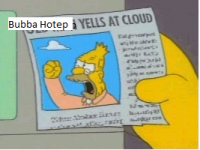FWD adding snow into the metro now

At the onset of precipitation Monday evening, the column
will still be relatively warm. However, over the next several
hours, forced ascent will act to cool the mid levels, while CAA
and evaporative cooling work simultaneously to send low-level
thermal profiles towards their wet bulb temperatures. By early
Tuesday morning, these mechanisms should allow the column to cool
sufficiently to allow for some snow to begin mixing with rain
across parts of North Texas. The majority of model soundings
indicate anomalously high Pacific moisture content through the mid
and upper levels, which will allow for profiles to be saturated
all the way to -20C or -30C, more than sufficient to saturate the
dendritic growth zone. The bit of uncertainty that remains is
regarding the low-level thermal profiles, particularly in the
lowest 1km, where a warm nose of +2C to +4C may still reside
through the morning hours. Despite its shallow nature, a warm nose
of +4C would likely be enough to melt most snow on its journey to
the surface. However, just a degree or two cooler and snow will
likely be able to survive the trip. Given trends towards colder
solutions in recent model runs, particularly last night`s 00z and
this morning`s 12z suites, there is a greater likelihood that
some portions of North Texas will observe a bit of snow on Tuesday
morning. In fact, it`s worth noting that all 20 GEFS members and
all 50(!) EPS members are now producing at least a small amount of
snow in some portion of our northwestern CWA during this time
period.
This has increased confidence such that the mention of a
chance of snow has been expanded across North Texas (including
parts of the DFW Metroplex) with this forecast issuance.In the "unlikely but not impossible" category: While I do not
have sleet mentioned in the worded forecast, it is possible that a
precipitation transition could consist of a brief mix of
rain/sleet before snow is observed, but rain and snow should be
the predominant 2 precipitation types. Since surface temperatures
are expected to be at or above freezing within the forecast area,
no mention of freezing rain has been included either, but there
is an outside chance that one of our far northwestern zones could
briefly dip to 31F or 30F while rain is still falling. Model-
derived precipitation types struggle mightily in these types of
scenarios with such subtleties in thermal profiles, and they have
largely been disregarded in this forecast in lieu of top-down
sounding analysis.
The bit of good news with this type of setup is that extremely
cold air is difficult to come by at the surface, and most surface
temperatures are expected to be above freezing while any snow (or
rain for that matter) would fall. This will inhibit accumulations
on roadways, especially given the fact that temperatures will
have been in the upper 60s and 70s just 12-18 hours previously.
Should a complete transition to snowfall occur and persist for a
couple of hours at any given location, then some minor
accumulations would be possible on surfaces like grass,
vehicles, and rooftops. At most, a slick spot on a bridge or two
could be a possibility, but overall, impacts from any wintry
weather should be little to none.
 The posts in this forum are NOT official forecast and should not be used as such. They are just the opinion of the poster and may or may not be backed by sound meteorological data. They are NOT endorsed by any professional institution or
The posts in this forum are NOT official forecast and should not be used as such. They are just the opinion of the poster and may or may not be backed by sound meteorological data. They are NOT endorsed by any professional institution or 













